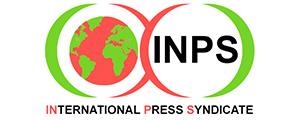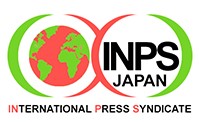By Ramesh Jaura
ASTANA (IDN) – While a moment of silence was observed on August 29 at 11:05 a.m. local time in Kazakhstan’s capital city Astana to honour the memory of the victims of all nuclear weapons tests, some 2713 miles (4365 kilometres) away, North Korea fired an intermediate range ballistic missile that flew over Japan: The same day a new facility was inaugurated in Kazakhstan under the auspices of the UN’s nuclear watchdog that could open a fresh chapter in non-proliferation.
In the five decades between July 1945, when the United States exploded its first atomic bomb, and the opening for signature of the Comprehensive Nuclear-Test-Ban Treaty (CTBT) in 1996, over 2,000 nuclear tests were carried out all over the world. After the CTBT was opened for signature in September 1996, nine nuclear tests had been conducted until 2016. Since then, only North Korea is known to have been conducting nuclear tests.
And this despite the fact that on December 2, 2009, the United Nations established August 29 the International Day against Nuclear Tests by unanimously adopting a resolution initiated by Kazakhstan together with several sponsors and cosponsors. The resolution 64/35 commemorated the closure of the Semipalatinsk Nuclear Test Site on August 29, 1991. Also known as The Polygon it was the primary nuclear testing site for the Soviet Union.
The ATOM Project – “Abolish Testing. Our Mission” – and meanwhile its Honorary Ambassador Karipbek Kuyukov, who is an armless artist and anti-nuclear weapons activist, played a crucial role in closing down of the nuclear test site. More than 1.5 million Kazakh citizens had been seriously exposed to nuclear weapons tests there, and to this day children are born with severe deformities, illnesses and a lifetime of health challenges.
“. . . the Semipalatinsk nuclear test site was closed down by the historic decree of Kazakh President Nursultan Nazarbayev [on attainting independence in the wake of the collapse of the Soviet Union] who all these years has been playing a key role in global efforts in non-proliferation and disarmament areas,” said Parliament Senate Chairman Kassym-Jomart Tokayev, closing the 62nd annual gathering of the Pugwash Conference on Science and World Affairs which together with its co-founder, Sir Joseph Rotblat, were awarded the 1995 Nobel Peace Prize.
The Pugwash Conference commemorated its 60th anniversary by focussing in its annual gathering from August 25 to August 29 in Astana on ‘Confronting New Nuclear Dangers’. The organisation draws its inspiration from the Russell-Einstein Manifesto of 1955, which urged leaders of the world to “think in a new way”: to renounce nuclear weapons, to “remember their humanity” and to find peaceful means for the settlement of all matters of dispute between them.”
The Pugwash Conference, which brings scientific insight and reason to bear on namely, the catastrophic threat posed to humanity by nuclear and other weapons of mass destruction, has been headed by former UN Under-Secretary-General Jayantha Dhanapala over the past ten years. The incoming President is Sergio Duarte, also a former UN Under-Secretary-General.
August 29, 2017 has the potential of unfolding a new chapter in nuclear non-proliferation with the inauguration of a facility, known as the low-enriched uranium (LEU) Bank of the UN’s International Atomic Energy Agency (IAEA) at the Ulba Metallurgical Plant (UMP) in the eastern city of Oskemen. It will store up to 90 tonnes of the fuel, enough to power a large city for three years, and sell it to IAEA members if they are unable to procure it elsewhere.
“The LEU Bank will serve as a last-resort mechanism to provide confidence to countries that they will be able to obtain LEU for the manufacture of fuel for nuclear power plants in the event of an unforeseen, non-commercial disruption to their supplies,” IAEA Director-General Yukiya Amano said in a statement.
“I am confident that the IAEA LEU Bank will make a valuable contribution to international efforts to ensure the availability of fuel for nuclear power plants,” he added during the inauguration event, presided by Kazakh President Nazarbayev, which the representatives of IAEA Member States and donors attended.
Executive Secretary Lassina Zerbo of the Preparatory Commission for the Comprehensive Nuclear-Test-Ban Treaty Organization (CTBTO), also participated in the event dedicated to the opening of the LEU Bank.
“While we are proud of the many successes, 29 August also serves as a reminder that banning nuclear tests remains unfinished business. As we work to consign nuclear testing to history, we must not forget the importance of trust at the regional and international levels,” said Zerbo indirectly referring to the challenges ahead.
According to Tariq Rauf, a former Director of SIPRI’s Disarmament, Arms Control and Non-Proliferation Programme, the Astana event will mark an important milestone in the long march for the IAEA to set up an IAEA owned and operated nuclear fuel bank as envisaged in the 1957 IAEA Statute.
This initiative was proposed in September 2006 by the Washington, D.C.-based Nuclear Threat Initiative (NTI) which offered US$50 million to the IAEA, provided by global investor Warren Buffet, to set up an IAEA LEU Bank by raising an additional $100 million.
By early 2009, the IAEA had accomplished the goal of getting funding support from the European Union (€50 million), Kuwait ($10 million), Norway ($5 million), United Arab Emirates ($10 million) and the United States of America ($50 million). Kazakhstan was the only country to offer to host the IAEA LEU Bank on its territory and pledged nearly $500,000 for the project.
IAEA Director-General Amano is convinced that the establishment and operation of the IAEA LEU Bank are fully funded by voluntary contributions from IAEA Member States and other donors totalling US $150 million – sufficient to cover estimated costs for 20 years of operation – and has no impact on the Agency’s budget or other activities.
Addressing the inauguration event, he said he was grateful to all donors “whose generous financial contributions have made this project possible.” He also thanked China and Russia for their cooperation regarding agreements for the transit through their countries of LEU for the IAEA LEU Bank.
Stressing that nuclear energy helps to address the twin challenges of securing sufficient energy for economic growth and mitigating the effects of climate change, Amano said around 30 countries are interested in introducing nuclear power. This is in addition to the same number of countries currently operating 447 nuclear power reactors around the world. Another 58 reactors are under construction, mostly in Asia.
“It is therefore very important that a last-resort mechanism such as the IAEA LEU Bank is established to give countries confidence that they will be able to meet their future needs for nuclear fuel,” he said.
According to the IAEA, the IAEA LEU Bank is part of global efforts to create an assured supply of nuclear fuel to countries in case of disruption of the commercial market or of other existing LEU supply arrangements.
Other assurance of supply mechanisms established with IAEA approval include a guaranteed physical reserve of LEU maintained by Russia at the International Uranium Enrichment Centre in Angarsk in Russia and a UK assurance of supply guaranty for supplies of LEU enrichment services. [IDN-InDepthNews – 30 August 2017]
Related article > Kazakhstan Plays a Crucial Role in Making the Nuclear Fuel Bank a Reality by Tariq Rauf.
Photo: IAEA Director-General Yukiya Amano (left) with Kazakh President Nursultan Nazarbayev with the symbolic key to the IAEA-LEU Bank. Credit: Katsuhiro Asagiri


